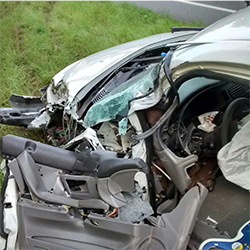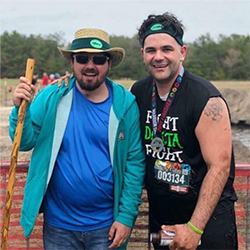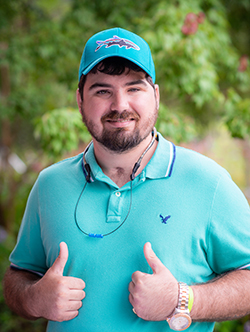August 4, 2015, began as a typical day for Dakota Massey. Work passed slowly as the familiar rumble of thunder marked the beginning of another summer thunderstorm. He clocked out like usual and headed home on familiar Carrabelle roads. Only this Tuesday would be unlike any other for Dakota, because just after 3 pm he was involved in a head-on collision with an oncoming semi-truck.
This kind of accident is one that many likely wouldn’t survive. Miraculously, Dakota did. And he would need several more miracles over the following three years to make a recovery.
The moments after Dakota’s impact with the semi-truck are an instance where what happened seemed more like fiction than reality. As Dakota laid motionless in his mangled car, he was met quickly by a family from New Jersey who witnessed the accident. The family happened to consist of a doctor, a nurse and an emergency medical technician — each well trained to respond to an incident like Dakota’s. The New Jersey family happened to be visiting a sick family member in Tallahassee and had escaped to Carrabelle for the day to explore the forgotten coast. As ambulances raced towards the scene of the accident, the family worked selflessly to perform life saving measures on Dakota in the critical moments just after the collision.
Dakota, unconscious and in severe distress, would be rushed 53 miles north to the Tallahassee Memorial HealthCare Bixler Trauma & Emergency Center with a laundry list of injuries: including a fractured C1 vertebrae, back, hip, femur and most of the bones in his face. Most notably, however, was the severe trauma to his brain from the violent crash.
Shelby Blank, MD was the trauma surgeon on call for Bixler Trauma & Emergency Center when Dakota arrived. She worked quickly, performing emergency measures to help stabilize Dakota.
“Whenever we receive a patient with significant trauma injuries, like Dakota, to the Bixler Trauma & Emergency Center, our procedure to evaluate them is called ATLS, which means Advanced Trauma Life Support,” says Dr. Blank. “It’s an approach to make sure we don’t miss any life-threatening injuries in the very acute phase of the evaluation.”
Once evaluated and the most emergent concerns are taken care of, other specialists are brought in to assist in the recovery.
“The care of a trauma patient often requires a good bit of coordination,” says Dr. Blank. “Not every patient needs every consultant, but often times there are multiple specialists on a patient’s care team.”
Dakota would end up in the Vogter Neuro Intensive Care Unit (VNICU), where he remained for close to five weeks – 27 days of which in a coma. He underwent several surgeries and very gradually began to recover.
“The impact of Dakota’s trauma was so significant and so severe that we had some difficult conversations with the Massey family,” said Nancy Anne Teems, RN, Nurse Manager of the VNICU. “Through it all, Dakota’s family never wavered in their belief that he would pull through and were rarely not by his side.”
 During Dakota’s lengthy stay in the VNICU, he and his family forged a strong bond with the clinical team who cared for him.
During Dakota’s lengthy stay in the VNICU, he and his family forged a strong bond with the clinical team who cared for him.
Whether it was the nurse who made sure Dakota was clean shaven or an environmental services staff member who brought Dakota’s mother a teddy bear on a particularly rough day, the personal touch of TMH's staff made all the difference during Dakota’s stay.
“It was the little things the TMH staff did that really helped,” recalled Nita Massey, Dakota’s mother. “It showed me that they knew Dakota, they cared about him and they were fighting for his life just as hard as we were fighting.”
Once Dakota was released from TMH, he began a merry-go-round of stops through several rehabilitation centers. The progress of Dakota’s recovery however, was slow to non-existent.
“When Dakota began his therapy, it was two steps forward and ten steps back,” said Nita. “We were not making much progress.”
Due to the severity of his brain trauma, Dakota slept for almost 23 hours every day – making therapy difficult. Compounding the issue were frequent returns to the hospital to re-insert his shunt, a device used to drain excess fluid away from the cavity between his skull.
In April of 2016, however, the shunt that was vital in stabilizing Dakota, became the source of a lifethreatening infection.
Dakota arrived at TMH with a severe infection and quickly became septic – the body’s extreme response to an infection that can rapidly cause tissue damage, organ failure and even death.
“I never believed that Dakota wouldn’t make it through the trauma of the accident itself,” Nita said. “But that infection was so bad I truly was worried he might not survive.”
Dakota would remain hospitalized for 57 days in a near fatal battle with sepsis. During which, Matthew Lawson, MD, Neurosurgeon, would play a critical role in resolving the infection and saving Dakota’s life.
“Dakota Massey presented with a severe infection that took several weeks to overcome,” said Dr. Lawson. “Once it was resolved, we successfully inserted a ventricular shunt that enables cerebrospinal fluid to flow from the brain to the atrium of the heart. The goal was to minimize the potential for infection and the likelihood of any future issues with the shunt.”
For the next six months, Dakota battled through therapy, making very gradual improvements. Over time, Dakota’s family and doctors began to look at the next phase of Dakota’s treatment: a cranioplasty.
Due to the swelling in Dakota’s brain caused by the trauma of the car accident, doctors had to remove a large portion of Dakota’s skull to help relieve the pressure on his brain. The family now felt it might be time for a cranioplasty, which is an operation to surgically repair a deformity or opening in the skull. In Dakota’s case, it meant affixing a man-made plate, printed by a 3D printer, to cover the nearly four-inch-wide hole in his skull.
 Before the cranioplasty, Dakota was in a vegetative state and could only vaguely wiggle his fingers. Remarkably, in his one-month follow-up with Dr. Lawson after the surgery, Dakota was noticeably more alert and awake. By his next appointment Dakota was out of bed and more mobile. And miraculously, by his third follow-up, he was walking up-right.
Before the cranioplasty, Dakota was in a vegetative state and could only vaguely wiggle his fingers. Remarkably, in his one-month follow-up with Dr. Lawson after the surgery, Dakota was noticeably more alert and awake. By his next appointment Dakota was out of bed and more mobile. And miraculously, by his third follow-up, he was walking up-right.
“He truly is one of those one in a million stories,” said Dr. Lawson. “Dakota’s recovery is remarkable.”
Three years after Dakota’s traumatic accident – after numerous setbacks and grueling hours in therapy – Dakota is able to fish, hunt and enjoy the outdoors again; something he loved before the collision.
Recently, Dakota was able to share his story to a roomful of listeners at TMH’s 9th Annual Trauma Awareness Day Celebration. Once finished, during the loud applause of the crowd, Dakota let out a cheer and lifted his arms into the air in triumph. This accident may have taken a lot from Dakota, but it wouldn’t define him, and in that moment the entire room caught a glimpse of Dakota’s fighting spirit.

